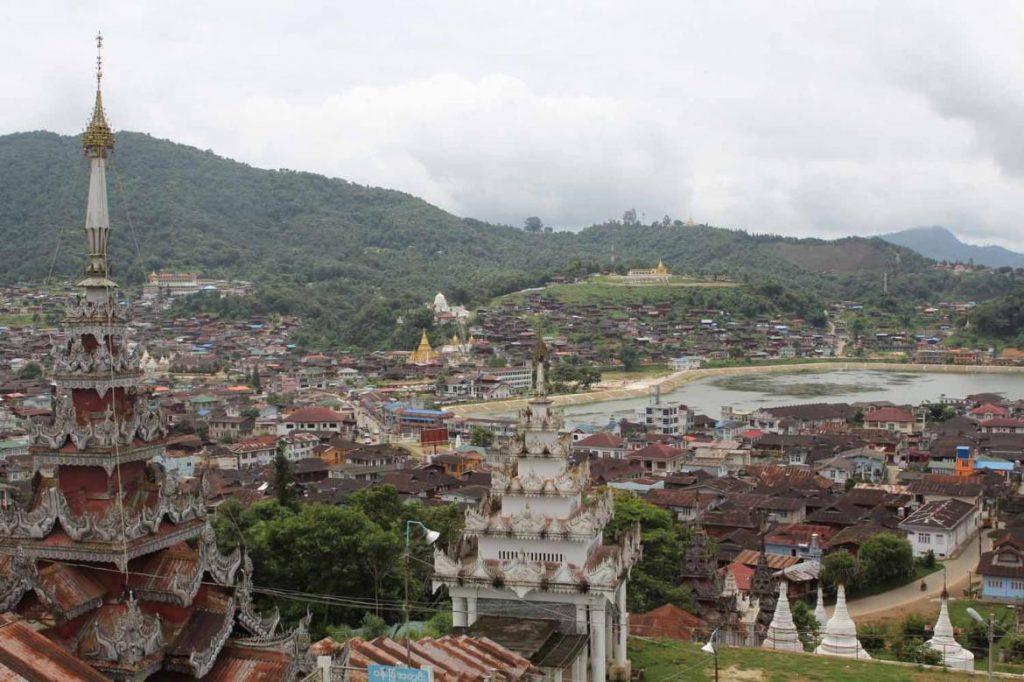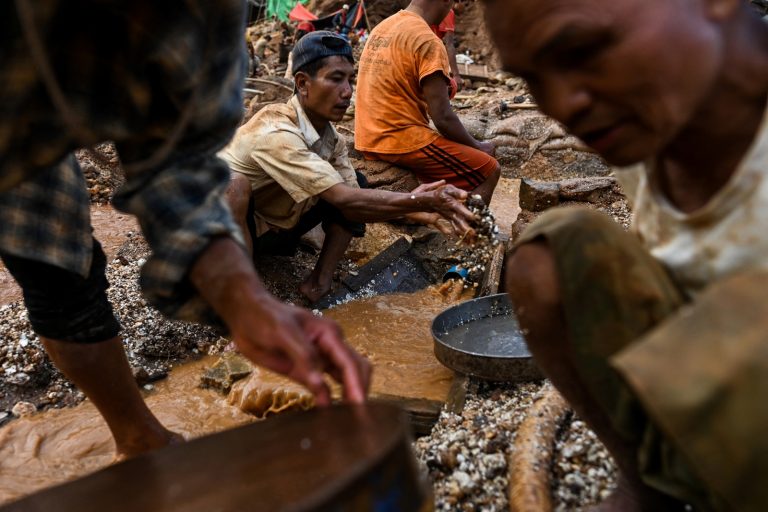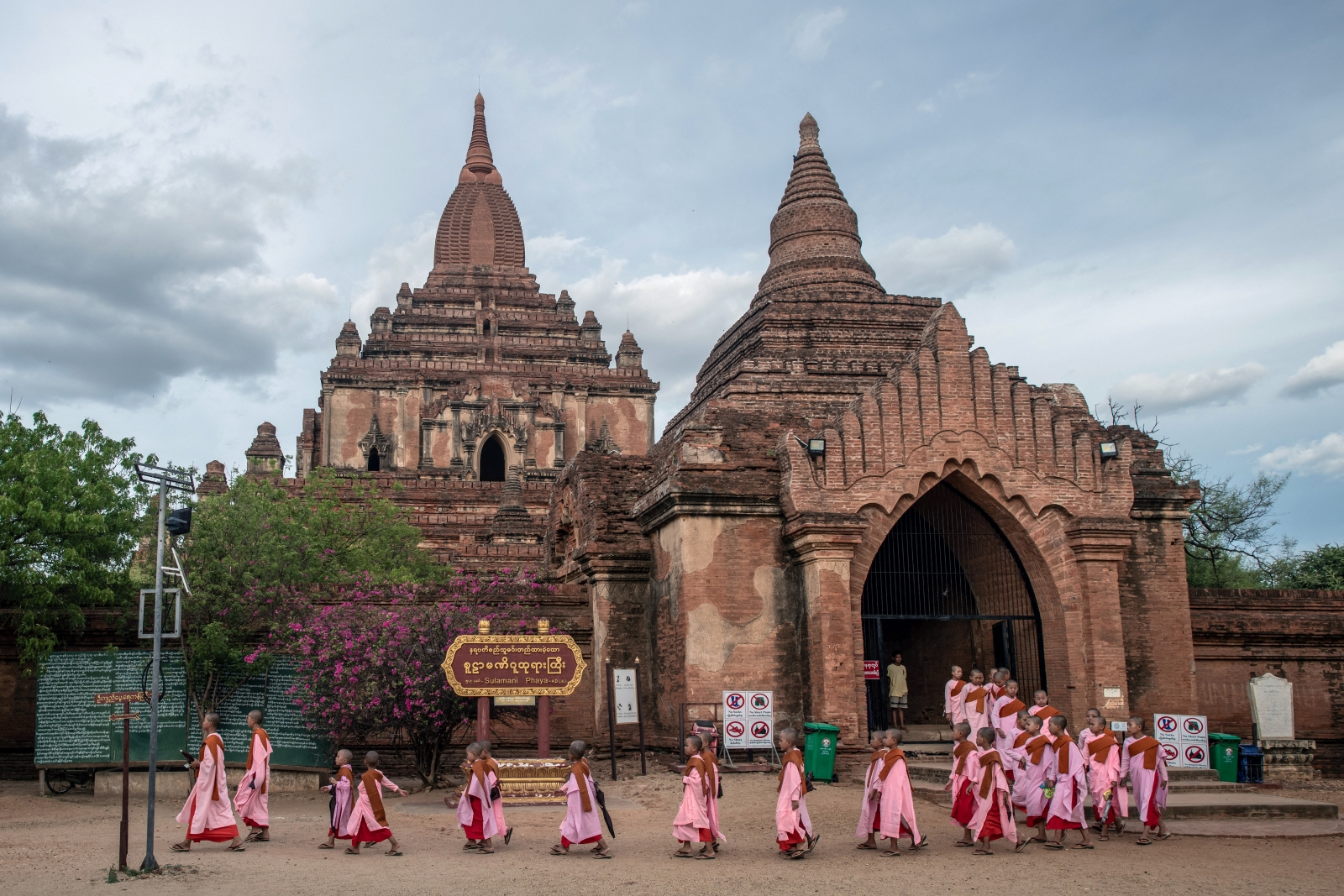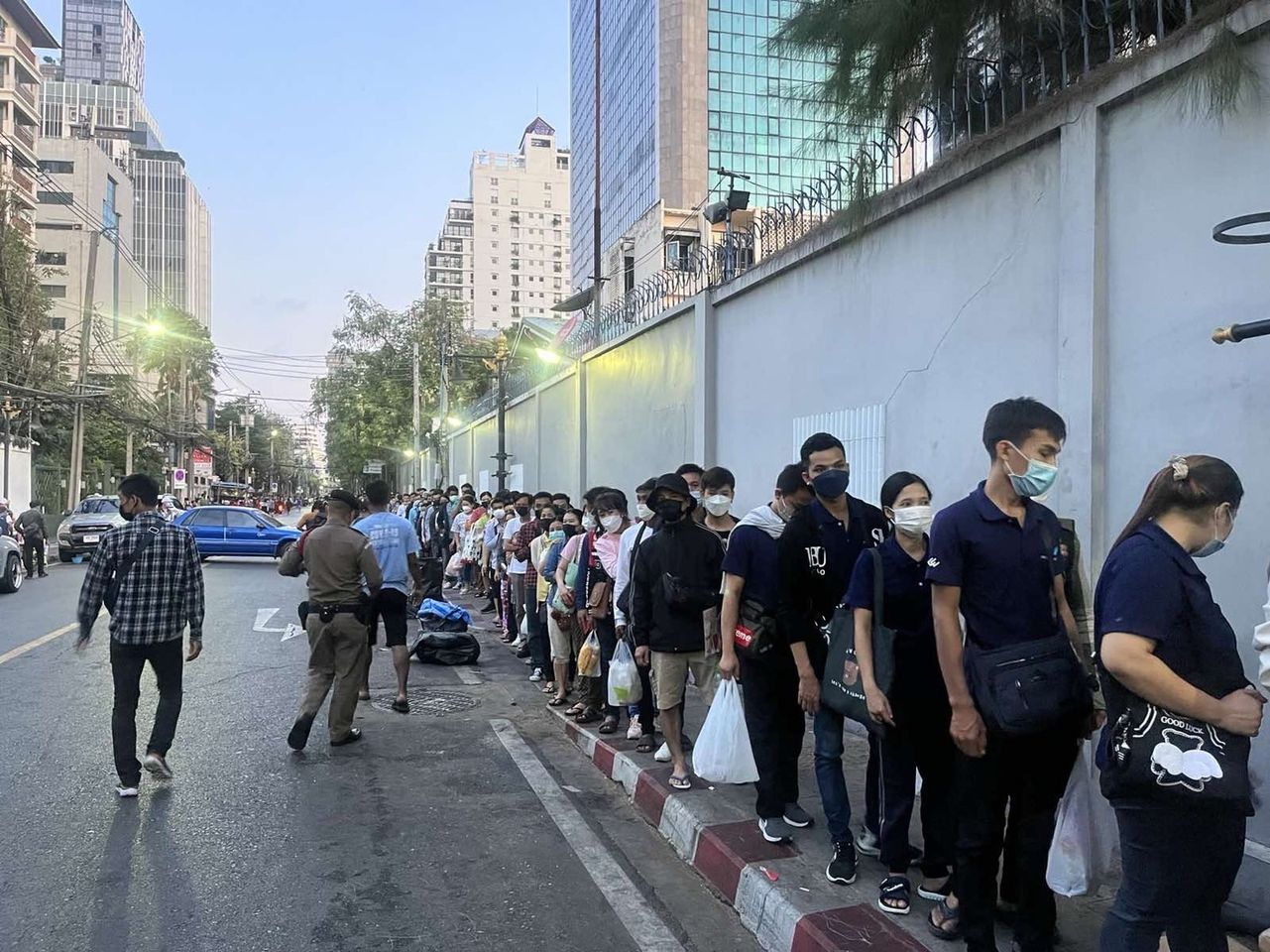Off-limits to foreign visitors for years, Mogok, a town renowned for its precious stones, sits ready to benefit from the country’s tourism boom.
By THOMAS KEAN | FRONTIER
“ENTRY TO Mogok area is restricted to foreign…”
The white letters on the pale blue signboard pass in a blur as our driver accelerates through the checkpoint. He needn’t have bothered – there’s no one manning the booth.
We’re about halfway between Mandalay and Mogok, a five-hour drive of 200 kilometres along a two-lane highway aptly referred to by locals as the “road of 999 bends”. Since a new route opened about five years ago between Pyin Oo Lwin and Mogok, it’s also been known as lan haung – the old road.
Either way, it’s a scenic ascent from the Mandalay plains onto the Shan plateau, through thick jungle that occasionally gives way to vertiginous millet fields, isolated villages and fast-flowing mountain streams.
img_3643.jpg
Support more independent journalism like this. Sign up to be a Frontier member.
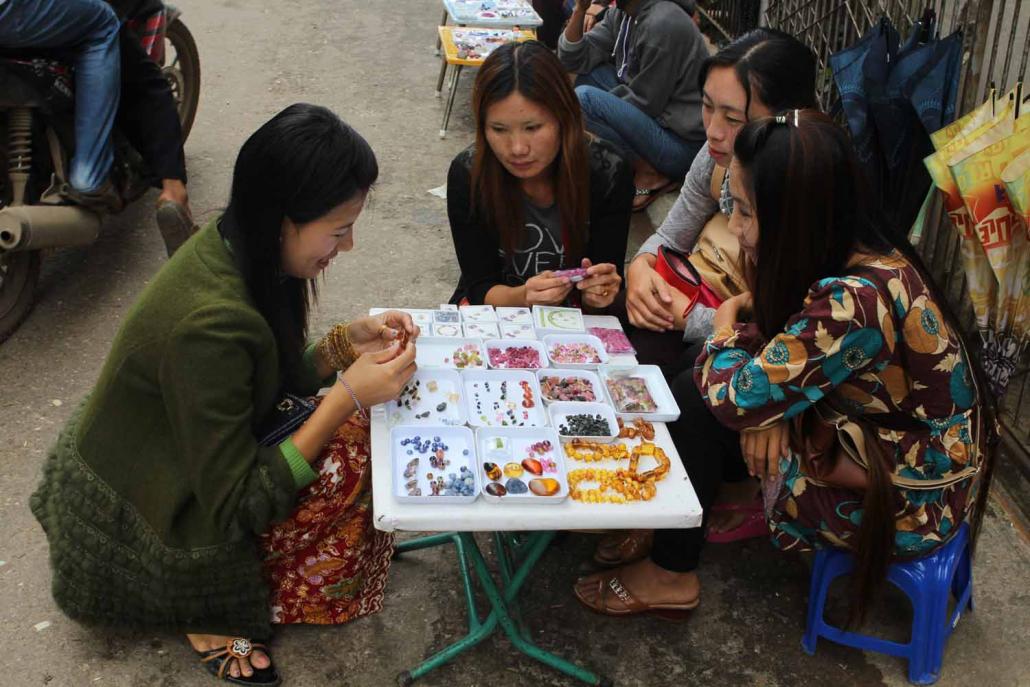
A woman examines gems and amber for sale at the yoke shin yone tar pwe, or “cinema gem market”. (Thomas Kean / Frontier)
It’s a road few foreigners have travelled because Mogok has been off limits to tourists for most of the past five decades. The ban was lifted very briefly in 1996, for the military junta’s unsuccessful “Visit Myanmar” year, and then again from 2000 to 2003. In January 2013, the Ministry of Home Affairs removed restrictions on access to most parts of the country, but specified that visitors to Mogok must have a pre-arranged permit.
Most other areas subject to these restrictions are close to conflict zones, or are impossibly remote. Mogok is different; the desire to keep tourists on a short leash is due to one thing: its ruby mines.
***
Mogok has been famed for its precious stones since at least the 13th century and its natural, pigeon-blood rubies remain prized around the world. In recent years, though, the supply of high-quality stones has started to dry up. In Myanmar, Mogok has largely fallen out of favour as a place to strike it rich, supplanted by the Kachin towns of Hpakant, for its jade mines, and to a lesser extent Tanai, which is home to a large supply of amber.
The Valley of Rubies, as Mogok is known, is still a wealthy town. But there’s a sense of faded glory; of a town that lives on its past.
Most of the mining now takes place in open-cut mines, rather than underground shafts that are dotted around the area, and can often be seen from the road. The mining method is relatively simple and mercifully devoid of chemicals: the soil is placed on a trestle with a backhoe, where it is pounded with water to separate the rocks from the dirt. The rocks are then sorted and examined for any signs of precious gems.
It’s effective, but nowhere near as exciting, romantic – or let’s face it – dangerous as an underground mine.
Shaft mines are still used, but are mostly off-limits to visitors. It’s possible to get a taste though at Golden Butterfly Hotel, one of just a handful of establishments that accept foreigners.
The hotel is set on more than 150 acres of garden and forest about 15 minutes’ drive from the centre of town. The property contains a large natural cave, where the hotel owner struck it rich back in the 1980s. The cave is open to visitors and has been made more accessible, with lighting installed and the walkway widened.
The two main gem markets also offer a chance to take the pulse. Each morning traders set up small stalls – often little more than a portable table – at the yoke shin yone tar pwe (the “Cinema Gem Market”).
Others mill around, pulling stones from their pockets when they spot potential buyers. When I visited, there were just a handful of customers; the freelance traders said they were lucky to sell something in a week. The afternoon market, known as pankyan tar pwe, was more formal, with plastic tables and chairs spread on a field resembling a football pitch. Nevertheless, business still seemed slow.
A further relaxation of travel restrictions would help to stimulate trade. Hundreds of thousands of tourists visit nearby Mandalay each year, but the permit system and a lack of clear tourist information mean very few bother with Mogok.
img_4018.jpg
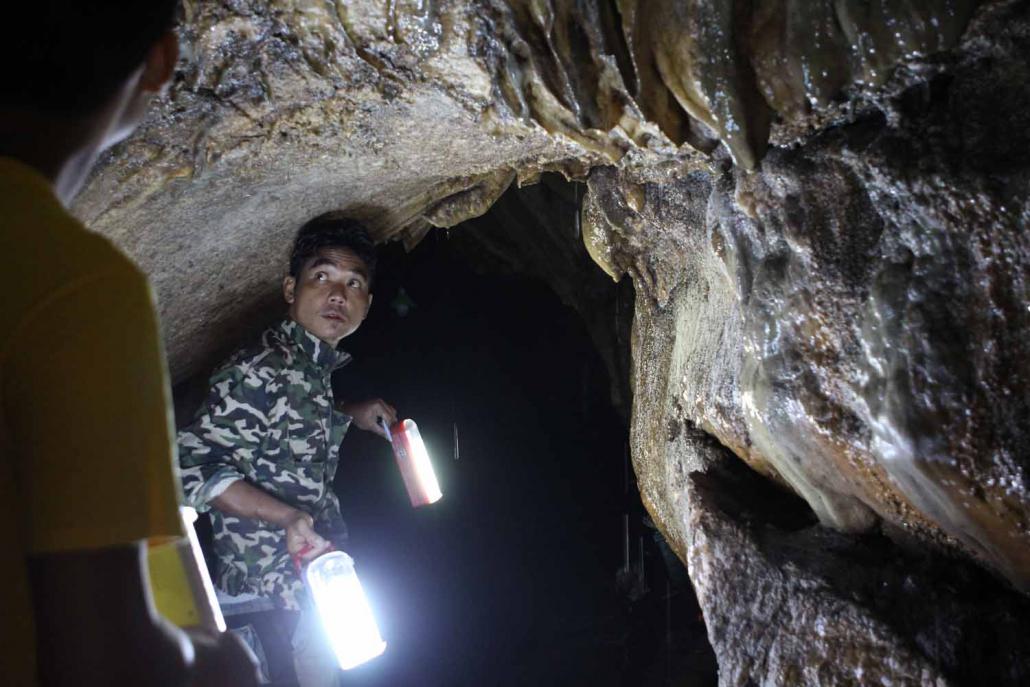
The cave near the Golden Butterfly Hotel where the hotel’s owner struck it rich. (Thomas Kean / Frontier)
Locals cited a number of reasons why the government would still want to restrict access to the town. Some speculated that it was because they worried foreigners would buy stones directly from the mines, without paying the necessary tax.
Others said the government was concerned about disputes between foreign visitors and gem traders. Insurgent groups, including the Ta’ang National Liberation Army, also have a low-level presence in the area. It seems only a matter of time though before the restrictions are lifted – for the street traders, it can’t come soon enough.
While Mogok is famous for rubies and, to a lesser degree, sapphires, the area’s mines produce a vast array of precious and semi-precious stones. Most are worth almost nothing. I know, because I walked away with a fistful – some cut, others just polished – for less than US$50.
Judging by the smiles on the faces of the traders from whom I bought them from, and from the many “presents” they gave me after our transaction was concluded, I should have paid much less.
Unless you’re an expert, or have at least some training, I’m not sure how you would know. To confuse the situation further, Mogok residents – including some who had spent years working in the gem trade – told me that a stone was worth only what someone wanted to buy it for.
***
Of course, there’s more to Mogok than mining and markets. It’s a neat, picturesque town in a valley flanked on both side by low mountains. At its centre is a lake – once a British-run mine that was flooded in 1925 – and pagodas on the ridges offer sweeping views over the rooftops.
The homes are mostly still in the traditional style, with a white concrete lower half and a wooden first storey, normally painted red or brown. A rusted corrugated iron roof seemed to be mandatory.
Those seeking the ultimate Mogok selfie should head up into the mountains to a spot known as lay pauk, or the wind hole, on the road to Ywar Thar Yar village. From this vantage point, you can see the road snaking down the hillside all the way back to Mogok, which unfolds in the valley below.
Ywar Thar Yar is also home to an unusual historical site: a British war cemetery that dates to the late 19th century, shortly after colonial forces took upper Myanmar, including Mogok, from King Thibaw.
The cemetery is neglected and overgrown, with the dozen visible headstones cracked and weathered. Nearby – on private property – is an old ammunition store, apparently the only other sign of the British occupation of the village, which was then known as Bernard Town.
For the British soldiers – both those who made it home, and those left behind – this lonely frontier must have felt like the end of the world. But it was of important economic importance to the British, who after seizing upper Myanmar in 1885 quickly set up a company to export its gems to the world – and, in the process, make it a household name.
Today, Mogok retains a degree of romance and mystery, and it’s only slowly beginning to reveal its secrets to foreign visitors.
This article originally appeared as part of Discover Myanmar, Frontier’s special report on the tourism industry. Top photo: A view over the rooftops of Mogok toward the town’s lake from Chanthargyi Pagoda. (Thomas Kean / Frontier)


